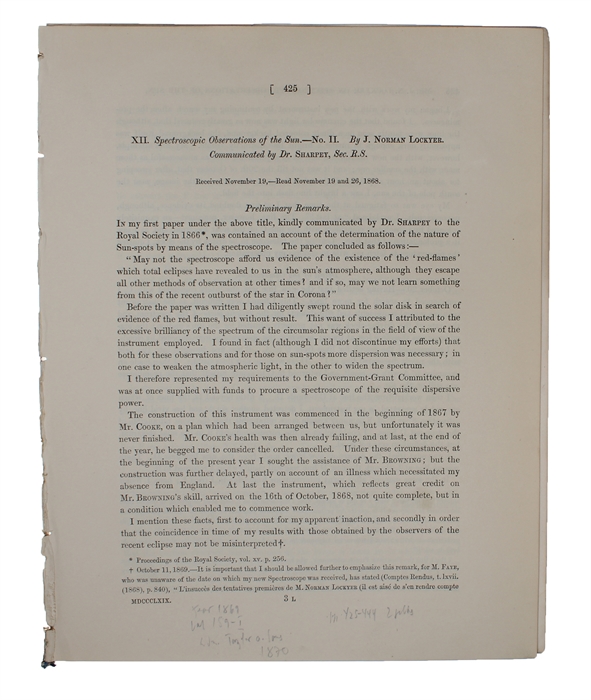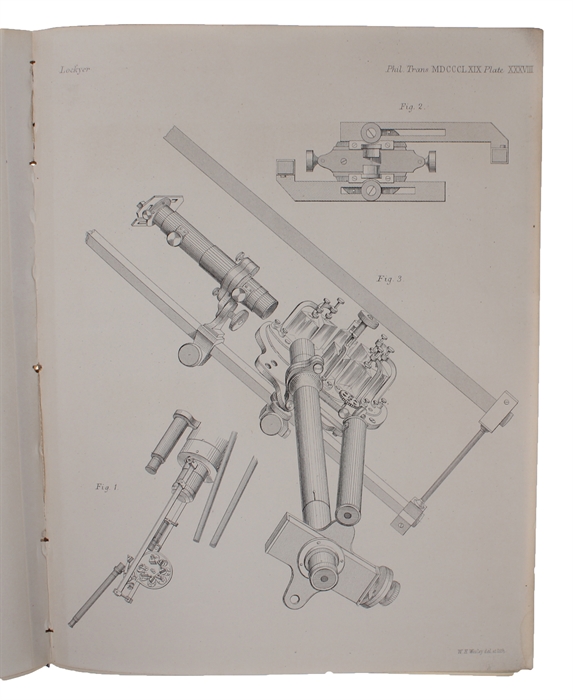LOCKYER, JOSEPH NORMAN - THE DISCOVERY OF HELIUM.
Spectroscopic Observations of the Sun.- No. II. Received November 19,- Read November 19 and 26, 1868. (With additional notes Nov. 26, April 9, 1869, Oct. 10, 1869).
(London, Taylor and Sons, 1870).
4to. No wrappers as extracted from "Philosophical Transactions" 1869, Vol. 159 - Part I. Pp. 425-444 and 2 lithographed plates (1 with the spectrum of helium, 1 with his spectroscope (not requiring eclipses to function)). Clean and fine.
First appearance of this milestone paper in chemistry, physics and astronomy, announcing the discovery of helium in the sun and naming it 'helium' for Helios, the Greek God of the Sun. In the same paper he demonstrates his invention of the spectroscope by which the prominences of the sun could be observed and studied without an eclipse by leading the light from the very edge of the sun through a prism. - Helium was not discovered on the earth before 1895 by William Ramsay, and it was Crookes who established its identity with the helium Lockyer observed in the spectrum of the sun.
"This (the last discovery) was announced on the same day by the French astronomer Janssen, who was in India observing a total eclipse. As a result, the French government some ten years later struck a medallion showing the heads of both scientists.
By that time, the two men had made a much more dramatic discovery at the same time, this time in cooperation. Janssen, studying the spectrum ofthe sun during the eclipse, had noted a fine line he did not recognize. he send a report on this to Lockyer, an acknowledges expert on solar spectra. Lockyer compared the reported position of the line with lines of known elements, concluding that it must belong to a yeat unknown element, possibly not even existing on the earth. He named the element, from the Greek word for the sun."(Asimov).
Order-nr.: 42423


